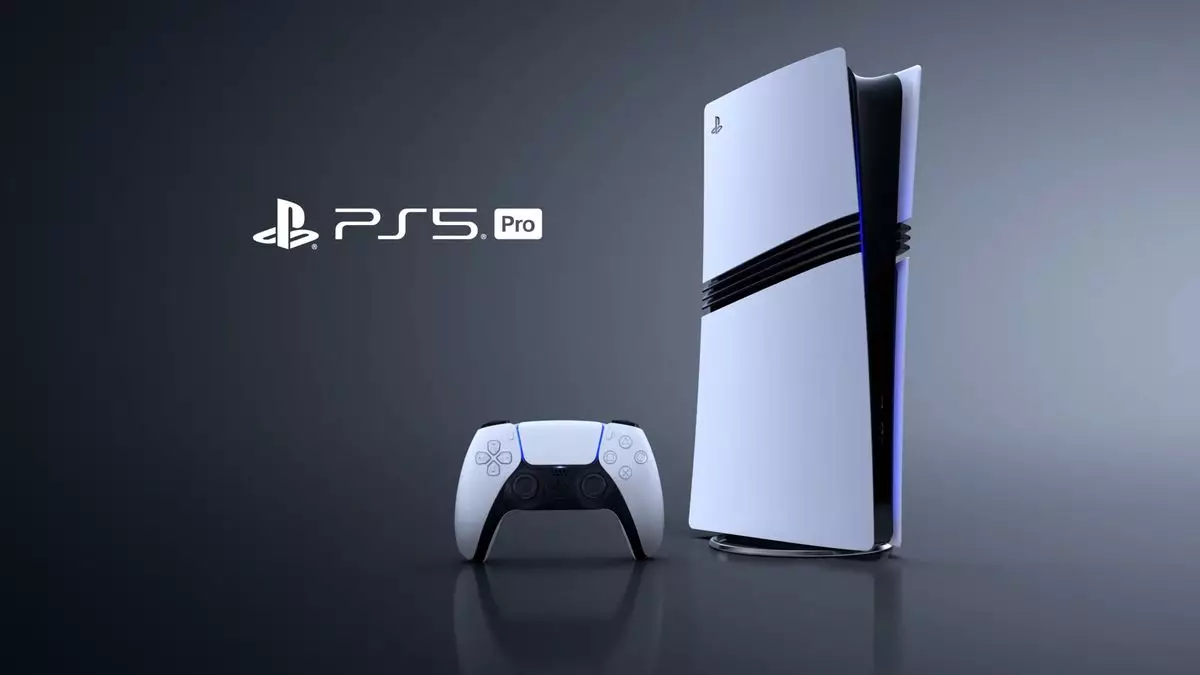In an era where gaming graphics have become paramount, Sony’s decision to develop its own AI-driven hardware for graphics upscaling stands as a significant strategic shift. The insights from Mark Cerny, Sony’s lead architect for the PlayStation ecosystem, reveal the company’s commitment to ensuring that its products remain at the forefront of technology. Instead of relying on existing frameworks provided by AMD, Sony has identified a distinct need for custom solutions tailored for the specific demands of the PlayStation 5 Pro.
This decision against licensing technology underscores a broader trend in the gaming industry: the need for manufacturers to possess in-house capabilities to maintain a competitive edge. With traditional gaming graphics becoming increasingly reliant on artificial intelligence, embracing a unique hardware approach enables Sony to have more control over performance and innovation.
AI has revolutionized various facets of technology, and gaming graphics are no exception. Current techniques such as deep learning algorithms have transformed how gamers experience visual fidelity. Sony’s venture into AI acceleration highlights the importance of machine learning (ML) in modern gaming, particularly in terms of graphics upscaling.
For clarity, AI-driven upscaling involves complex matrix math operations that facilitate real-time enhancements to image quality. Unlike AMD’s existing strategies, which depend heavily on manually coded algorithms, platforms like Nvidia and Intel leverage dedicated AI hardware to perform these intricate tasks effectively. This creates an undeniable gap between the performance capabilities of different platforms, where Nvidia’s Deep Learning Super Sampling (DLSS) currently leads the pack.
Sony’s engineering team faced daunting challenges when reimagining the PlayStation 5’s architecture. The primary dilemma revolved around the choice between integrating a dedicated Neural Processing Unit (NPU) or enhancing the existing GPU specifically for this purpose. Ultimately, the decision favored a bespoke solution — an enhanced version of AMD’s RDNA 2 architecture.
The ambitious goal was to achieve a staggering 300 trillion operations per second (TOPS) in ML performance — a metric that places it on par with leading Nvidia models. This feat required not only modifying the existing GPU architecture but also addressing bandwidth limitations inherent in matrix math operations. As Cerny explains, the bandwidth demands of matrix math exceed conventional specifications found in most consumer graphics hardware. Thus, the design process incorporated innovative on-chip memory solutions that facilitate the necessary high-speed computations without straining system memory.
Sony’s customizations also reflect an unwillingness to adhere strictly to industry standards, particularly those set by competitors. This narrative raises important questions about the future trajectory of graphic technologies. As Cerny detailed, developing proprietary technology allows Sony to sidestep the risks associated with licensing agreements, which can often tie companies to fixed patterns and limit their agility in innovation.
Moreover, Cerny’s emphasis on a “four-year journey” encapsulates the extensive commitment required to push boundaries and cultivate proprietary technology. The operationalized learning in AI integration will likely foster deeper insights into how graphics can be continually enhanced, pushing the envelope for gaming experiences now and in the future.
The race for superior graphics technology isn’t just a matter of academic interest but a pivotal aspect of consumer engagement and market share. While Sony charges ahead with its new ML hardware designed for AI upscaling, AMD’s current offerings reveal a troubling gap in performance capabilities. Without dedicated ML hardware, AMD’s FSR (FidelityFX Super Resolution) falls behind competitors in both performance and effectiveness.
As new generations of GPUs emerge, the importance of dedicated AI capabilities becomes ever clearer. Industry veterans like Nvidia have not only established a benchmark with their innovations but have also set a precedent for the success of gaming platforms that prioritize AI-enhanced graphics. As for AMD, the pressure builds to integrate similar technology effectively to avoid being sidelined in the competitive landscape.
Looking ahead, Sony’s pioneering move into custom AI hardware presents new possibilities for future console generations. As Cerny aptly notes, the insights gained from this venture assure an optimistic outlook for improving graphics in gaming realms. The evolution of AI-driven technologies will likely redefine how developers approach game design, leading to richer, more immersive experiences.
Ultimately, as Sony forges its path with the PlayStation 5 Pro, the long-term implications for AI integration in gaming cannot be overstated. The consciousness to adopt a bespoke approach not only enhances current capabilities but also paves the way for a future where immersive experiences are seamlessly woven into storytelling and gameplay alike. Through these developments, the landscape of gaming graphics continues to evolve, fueled by innovation, creativity, and a commitment to excellence.

